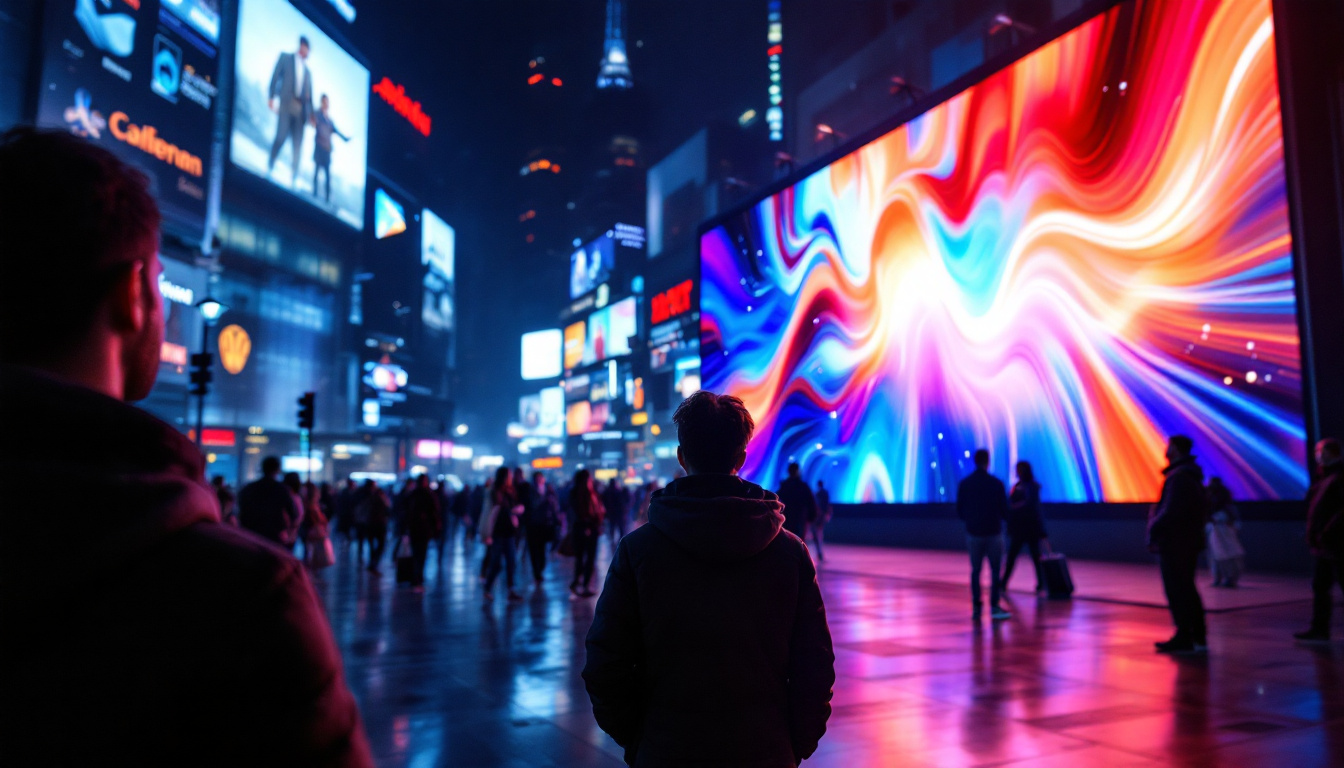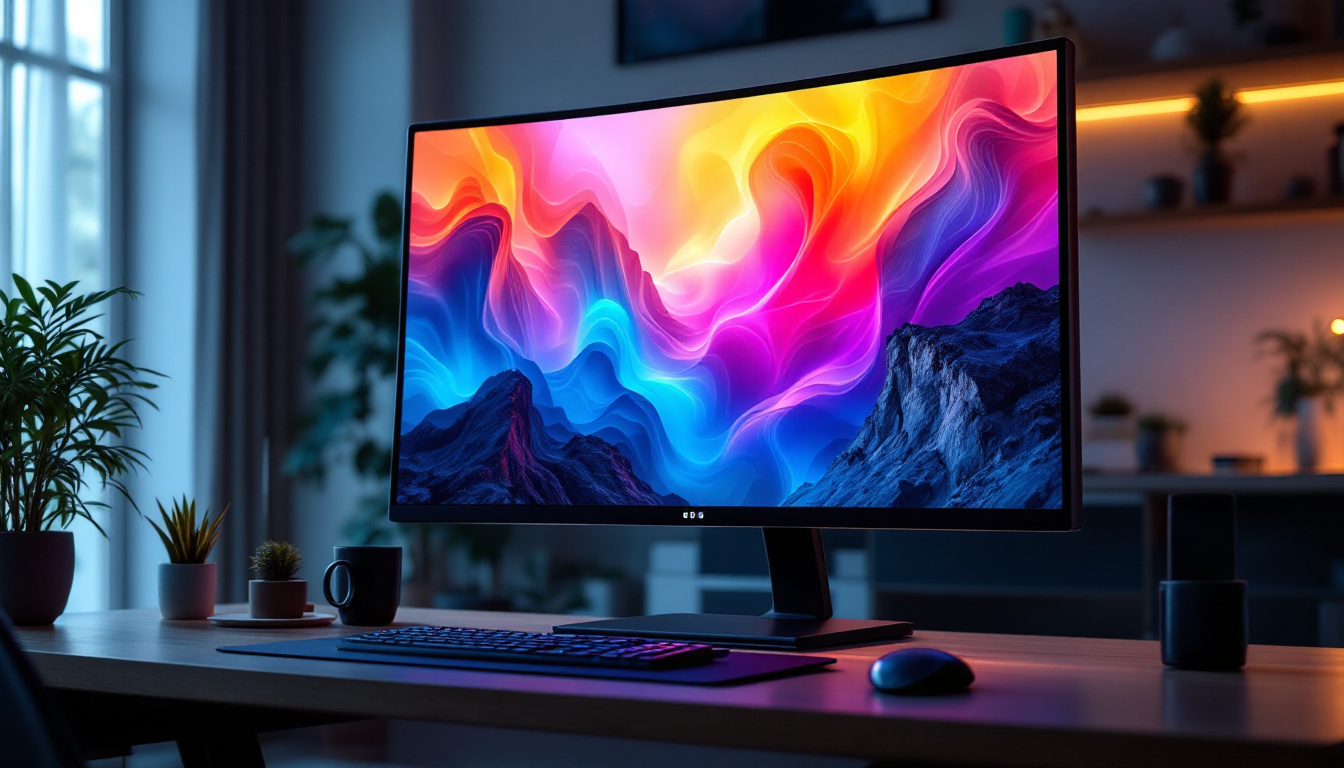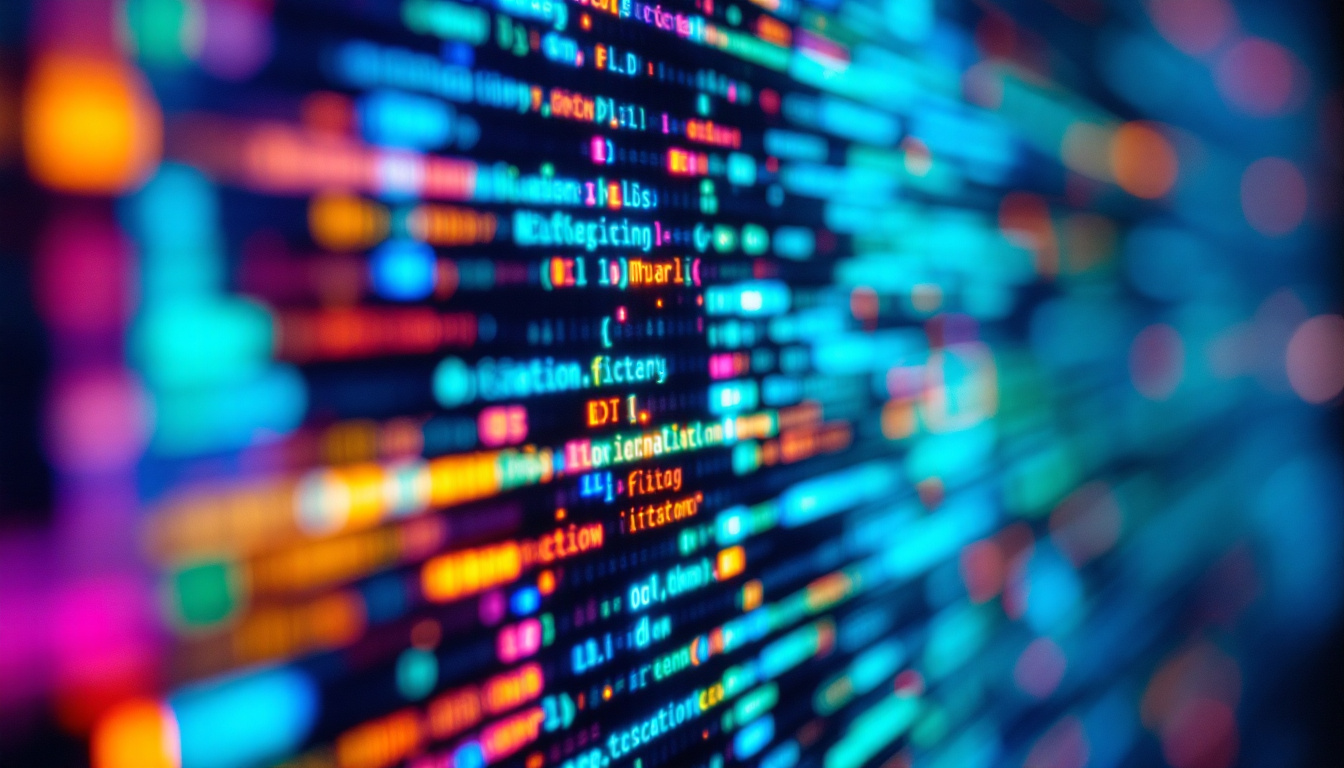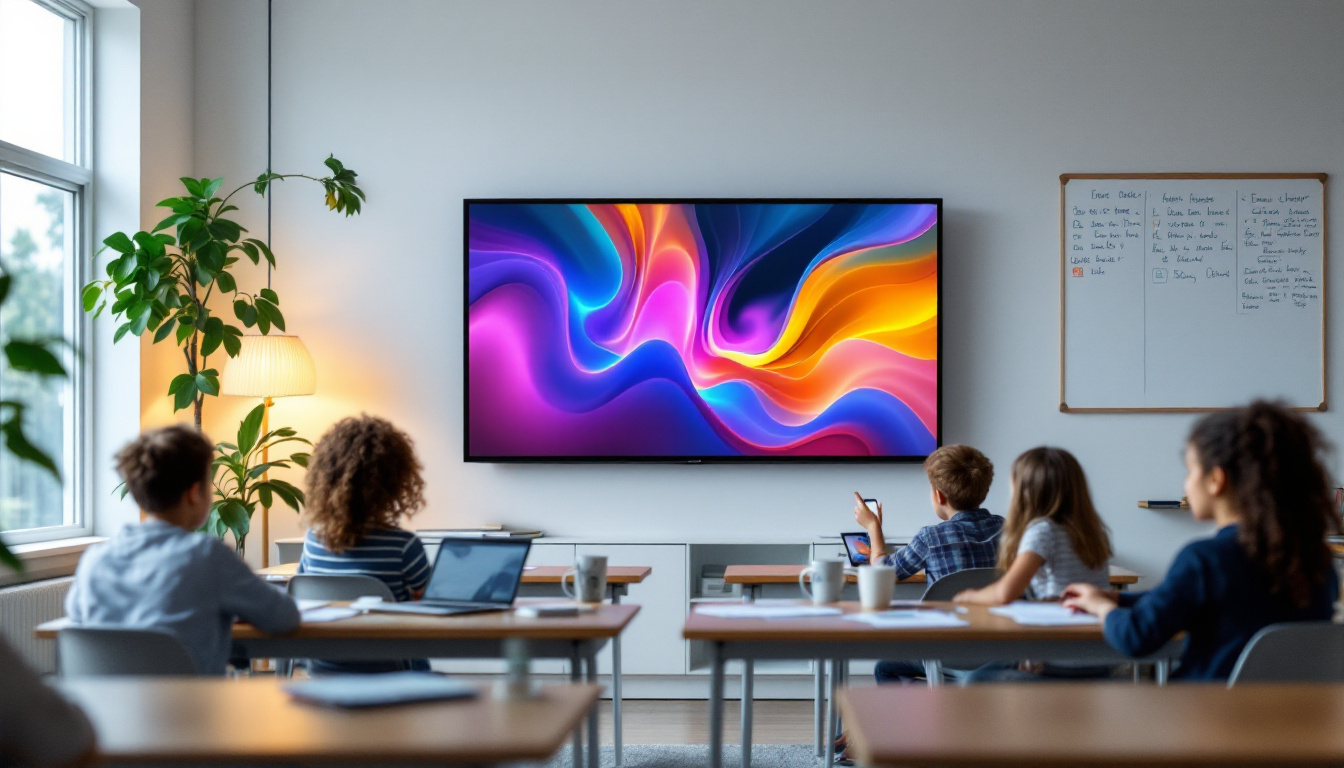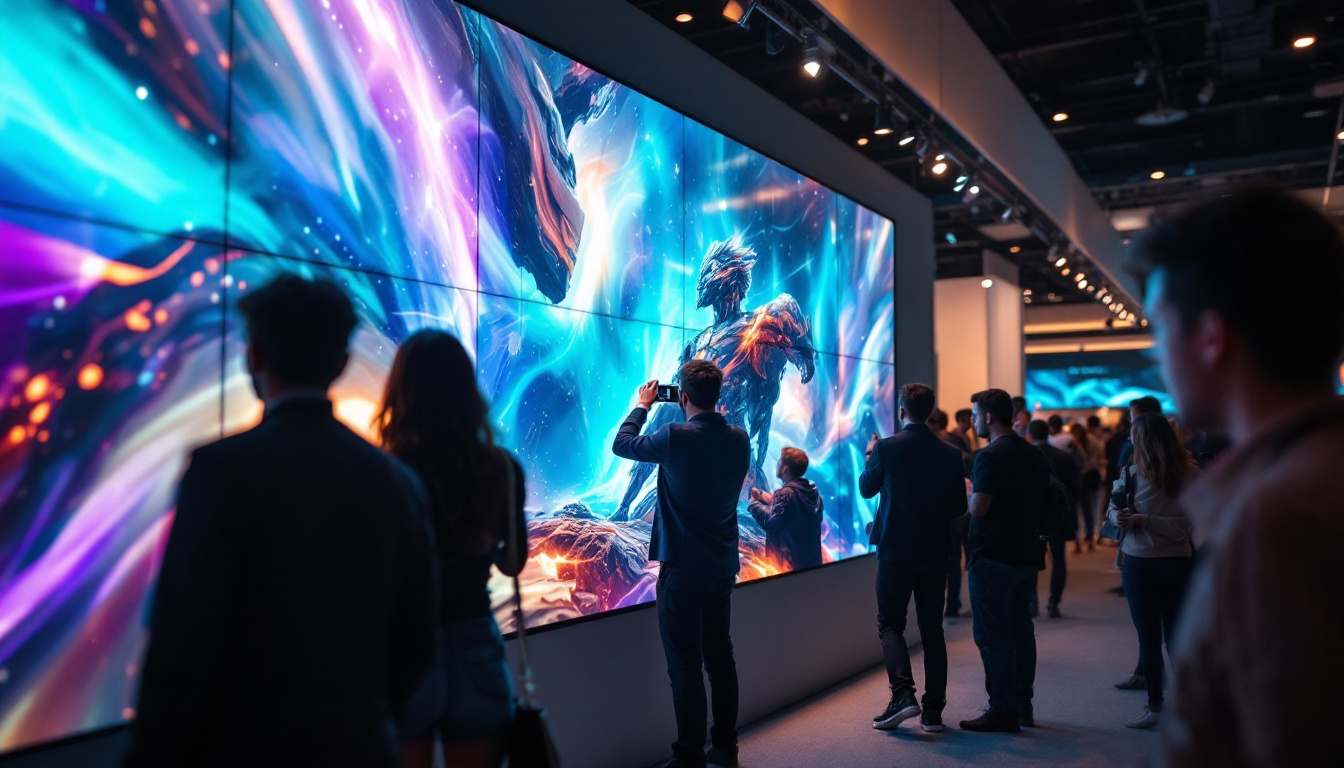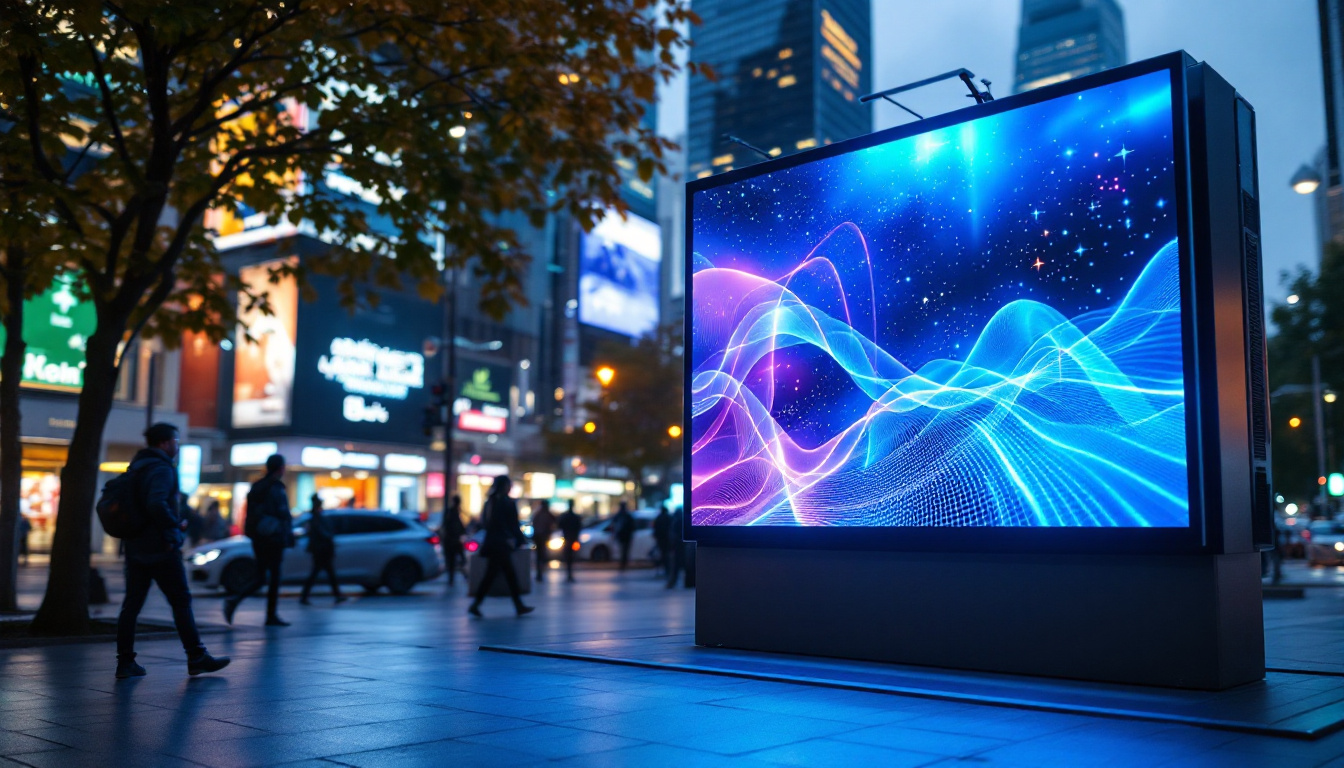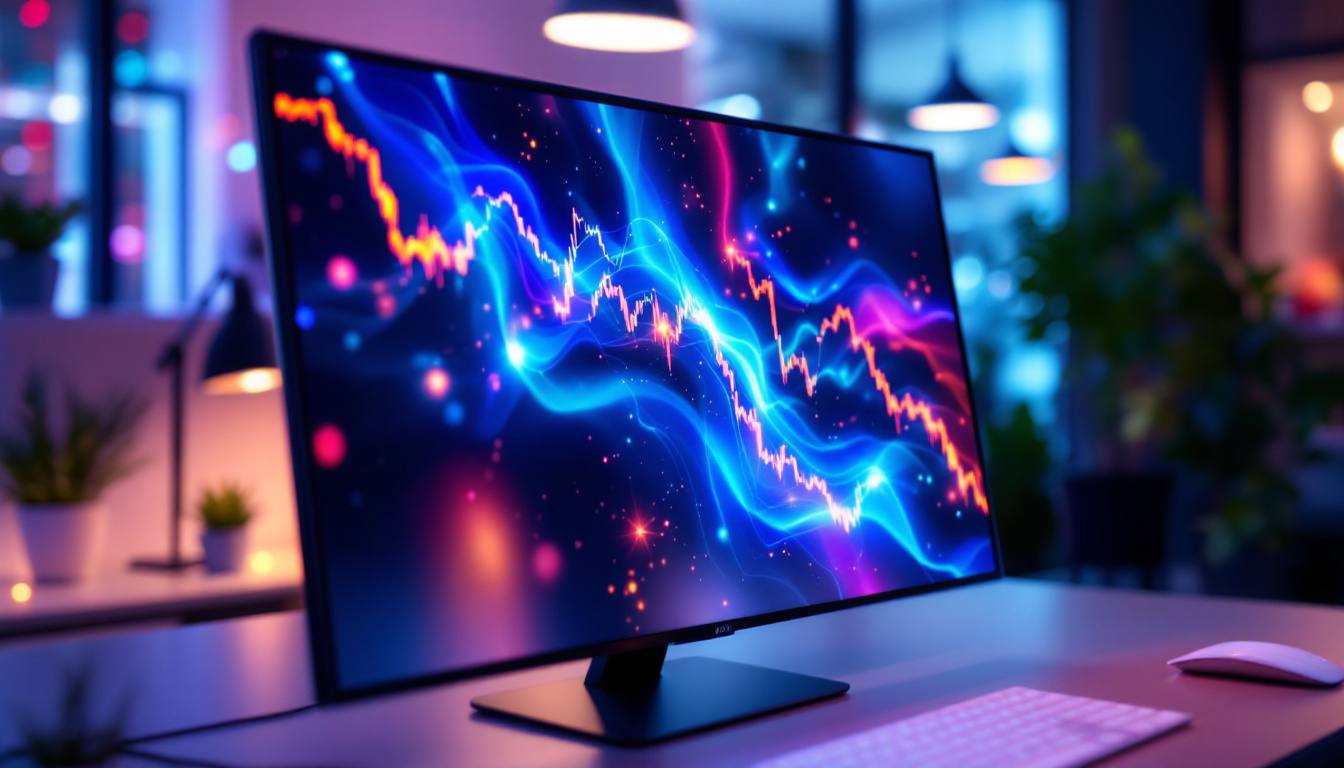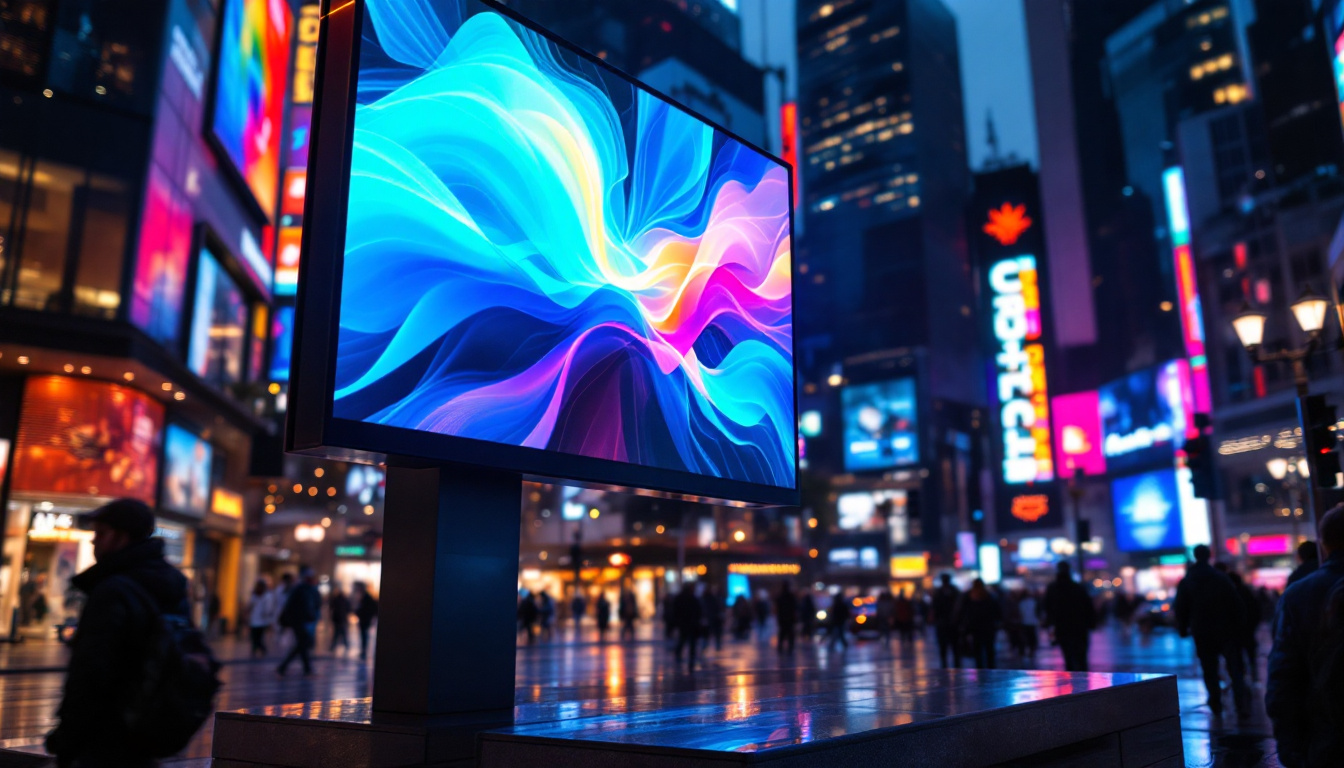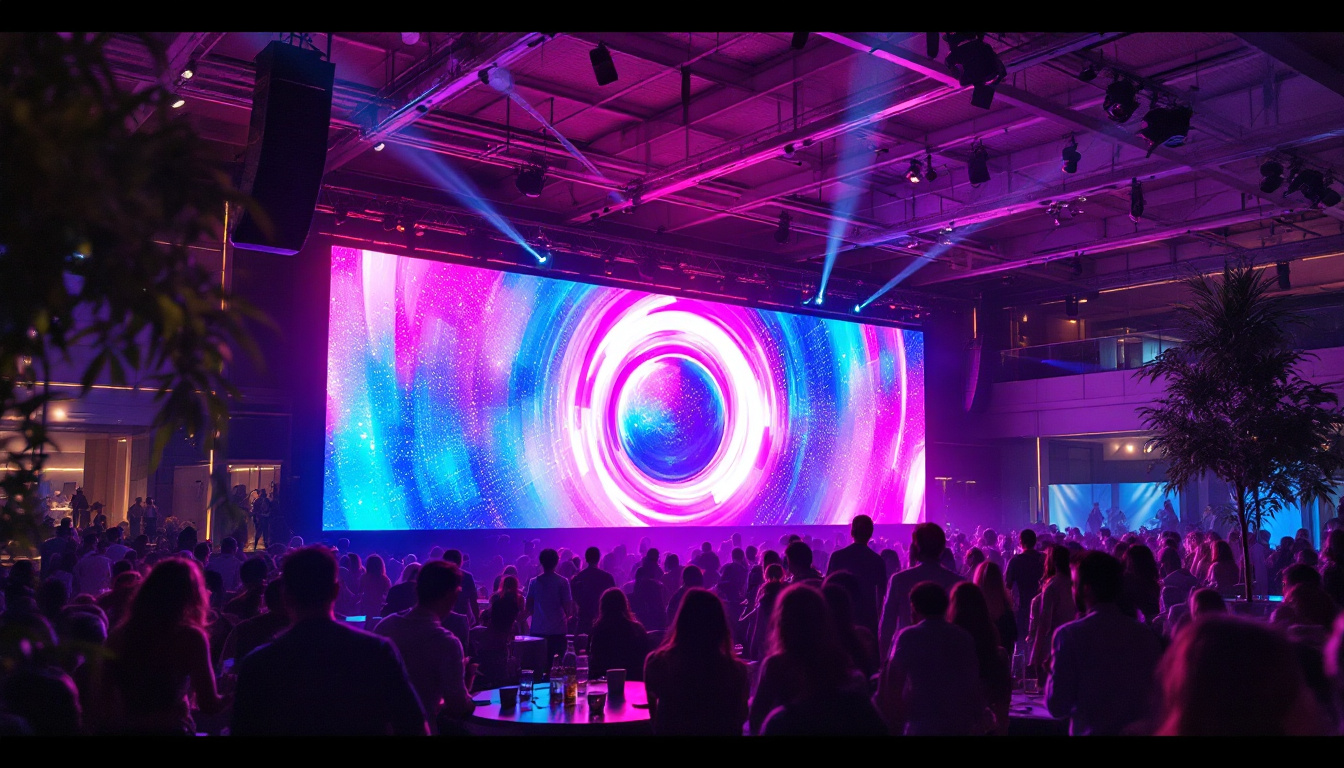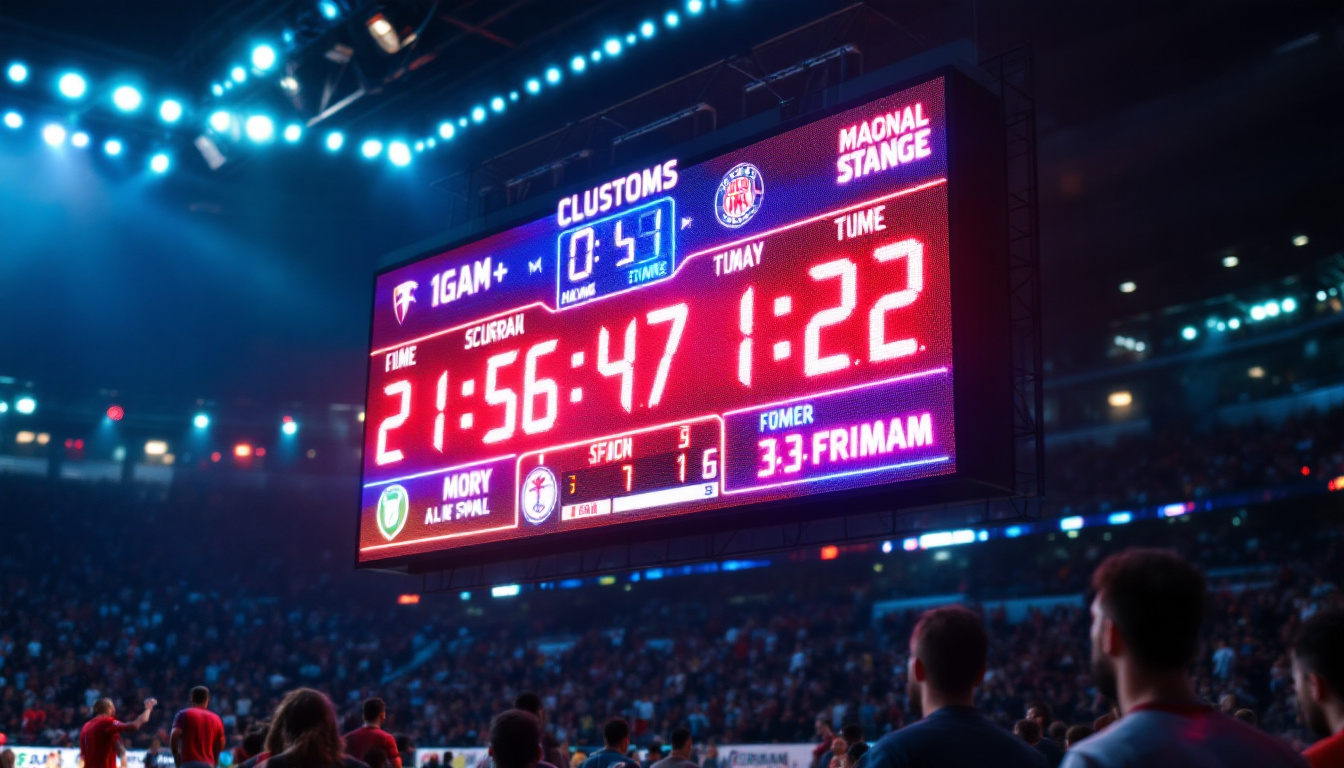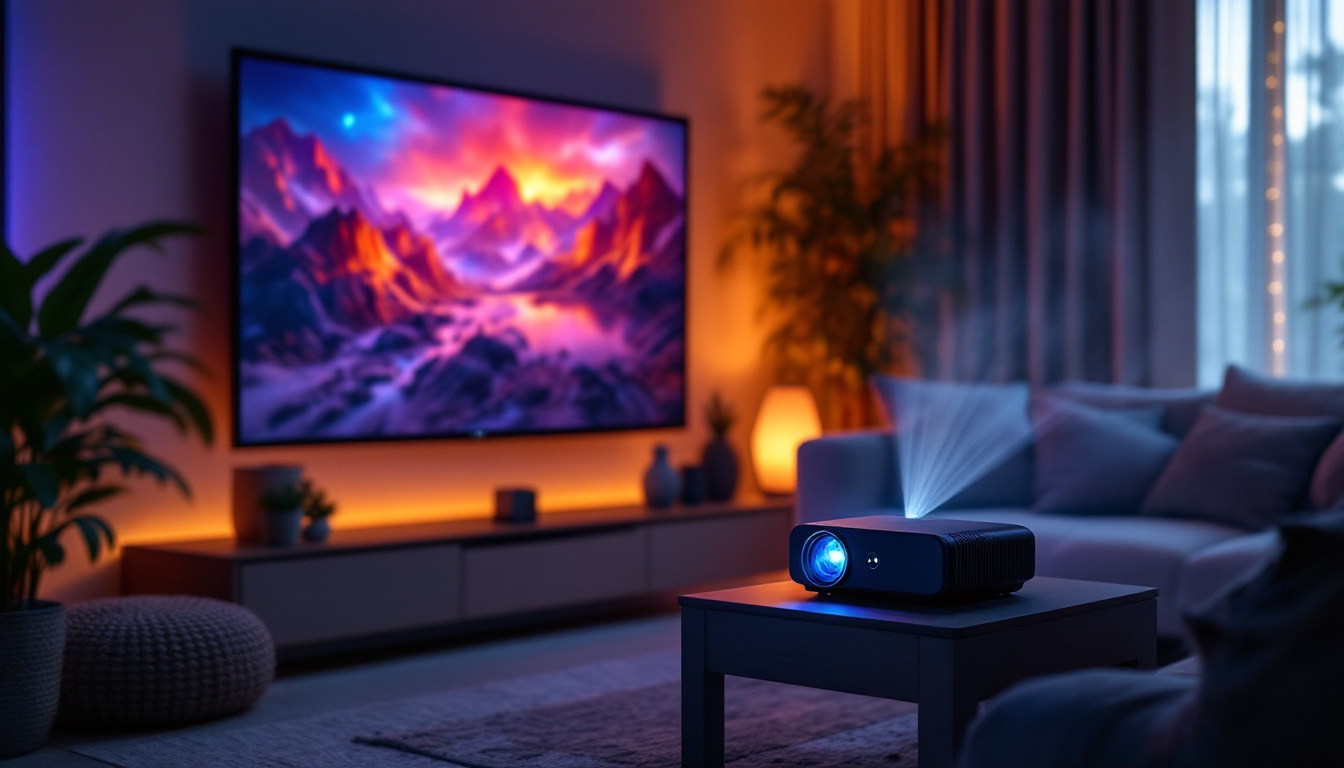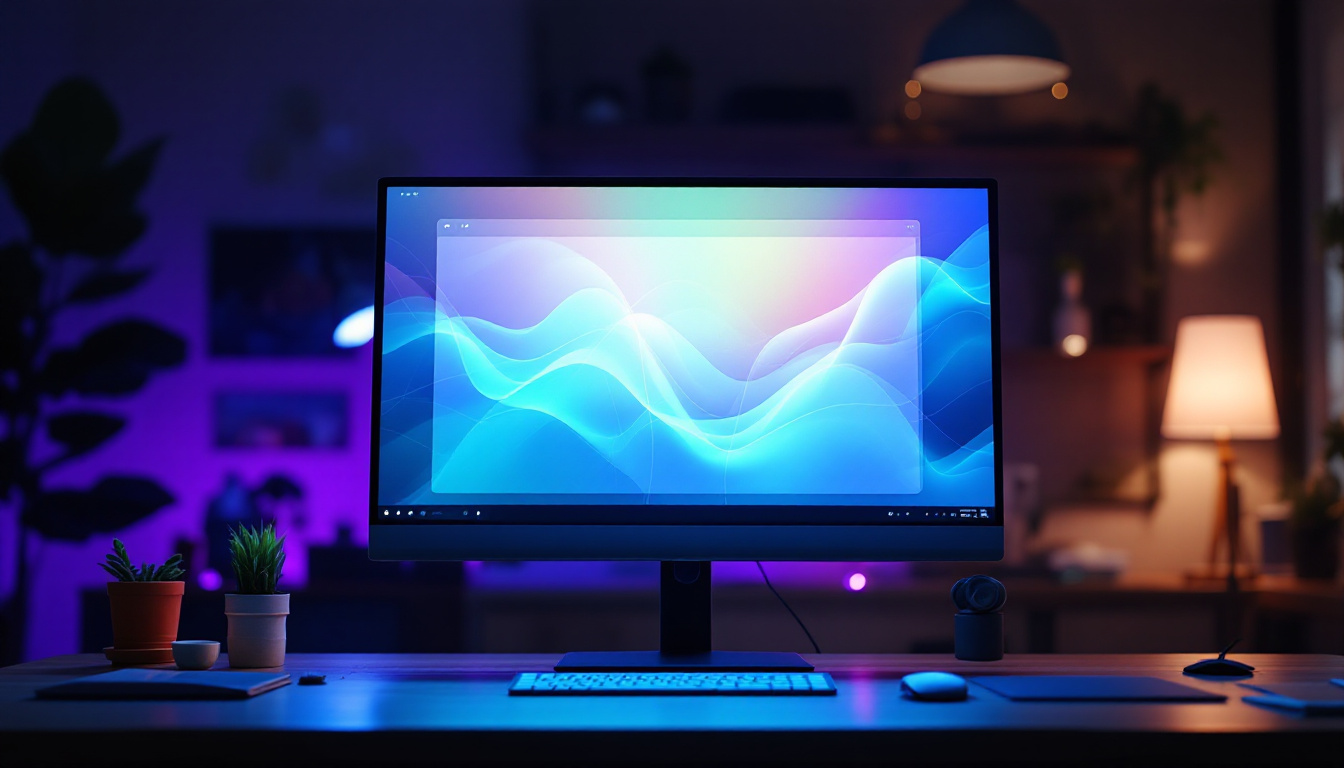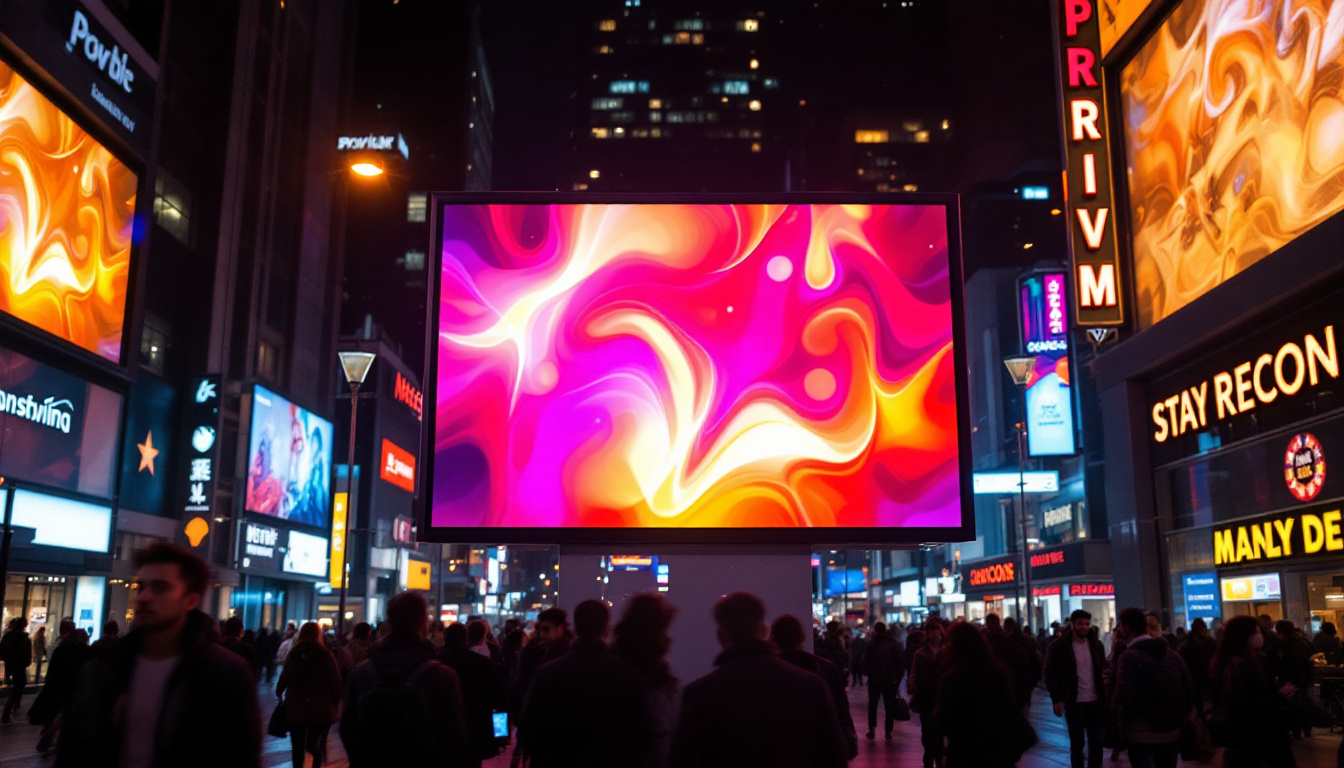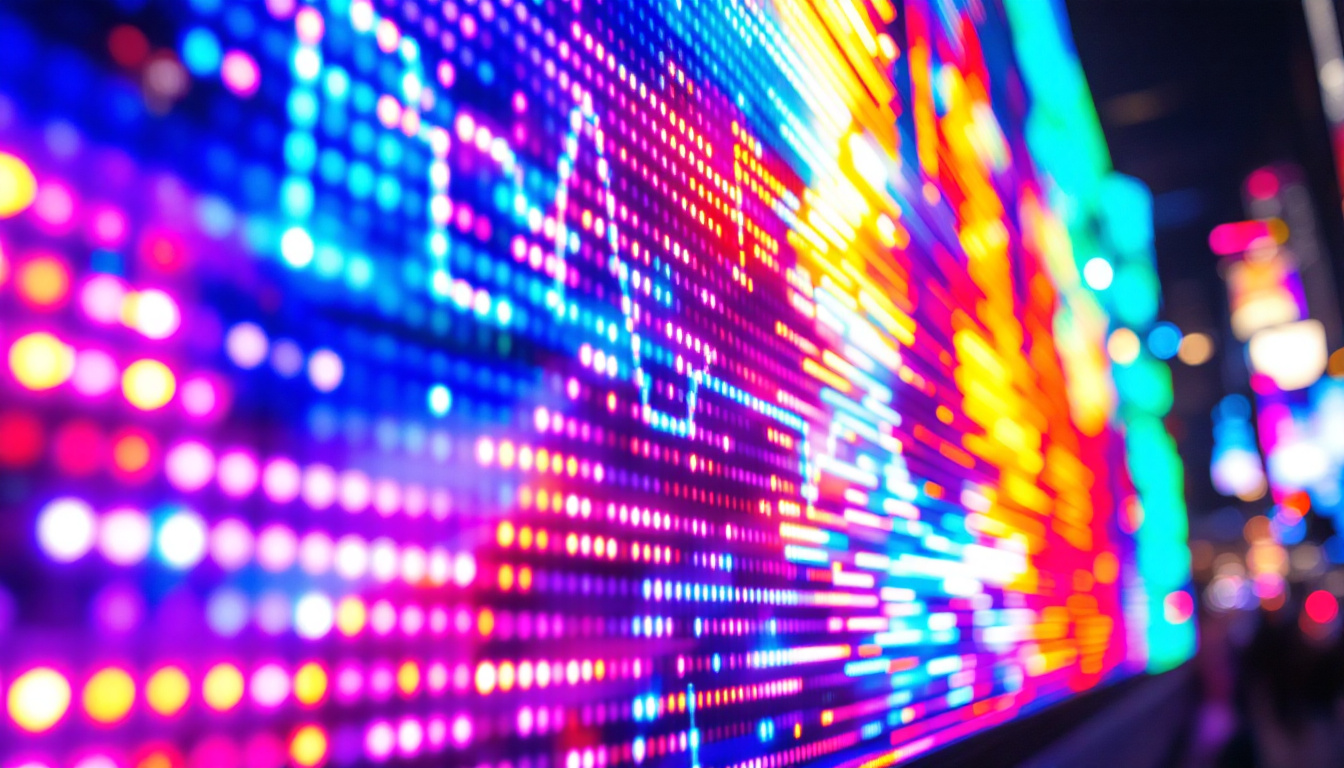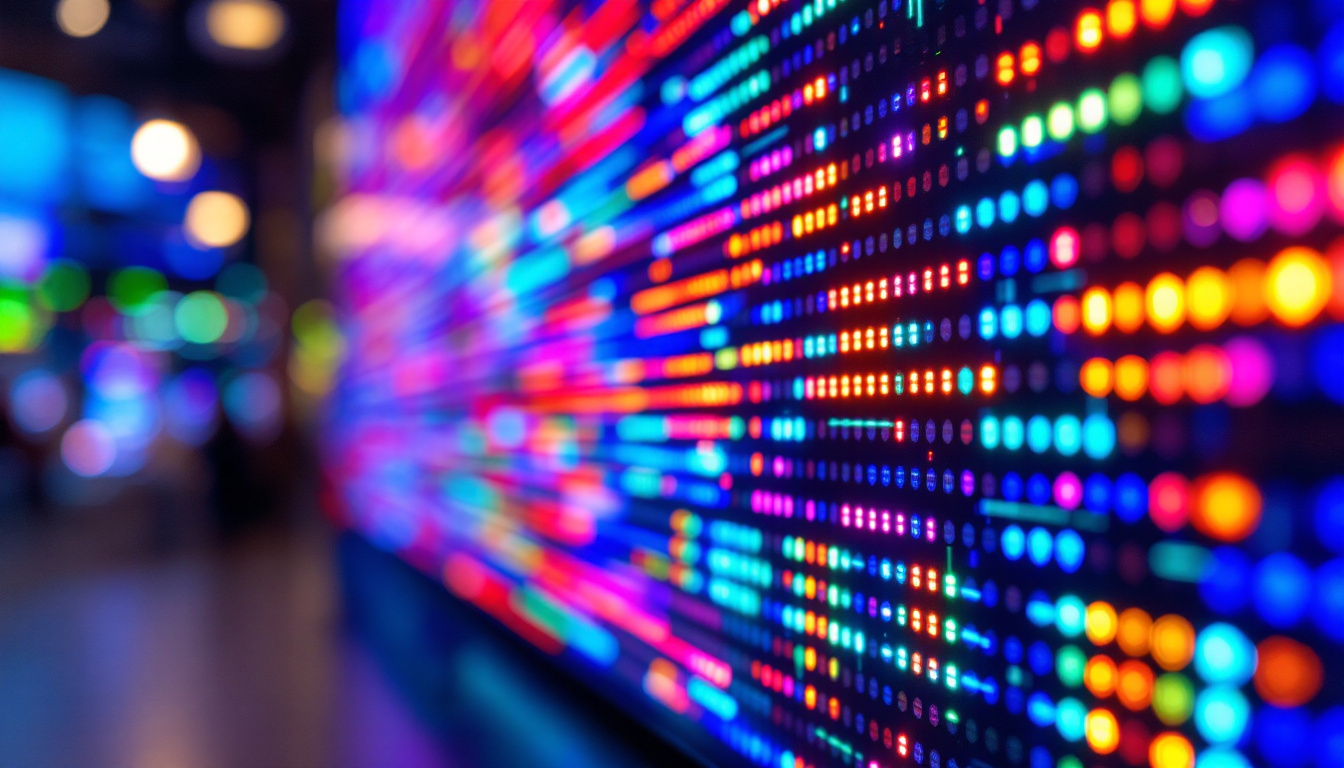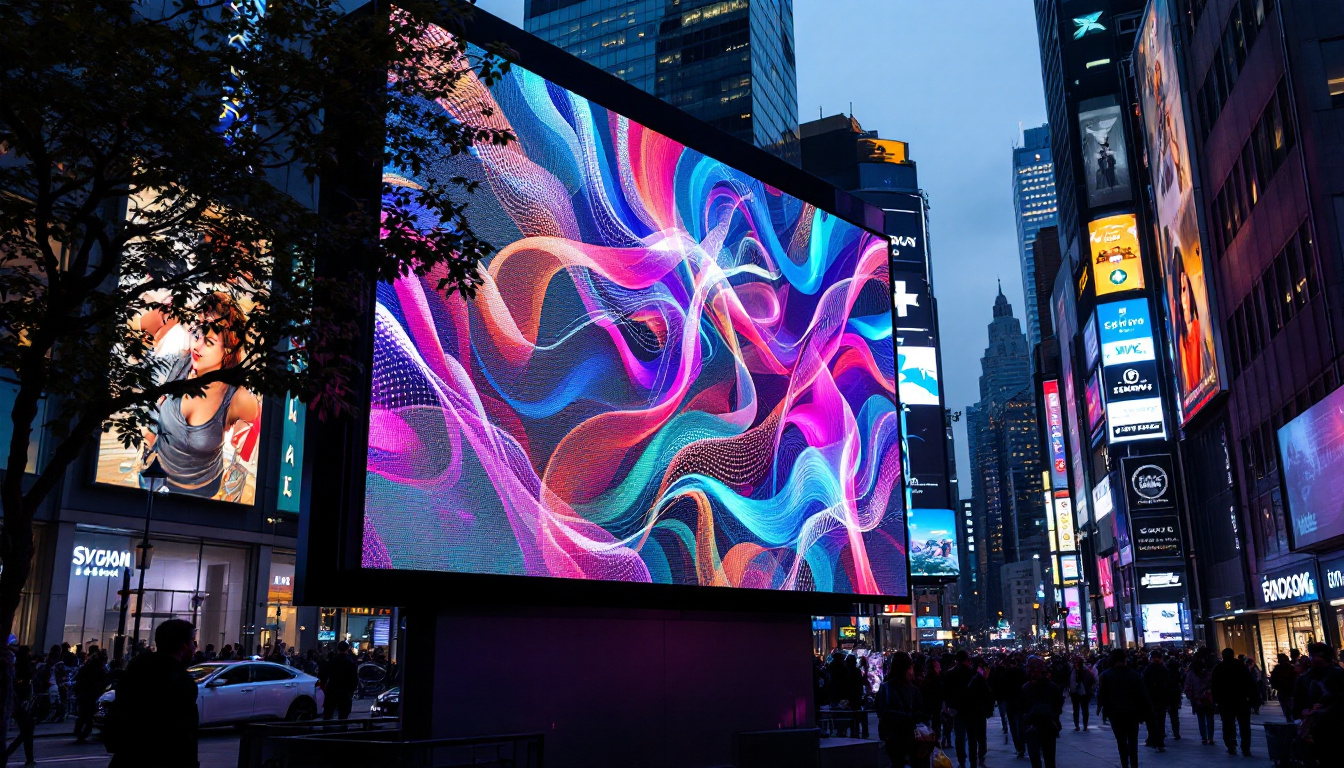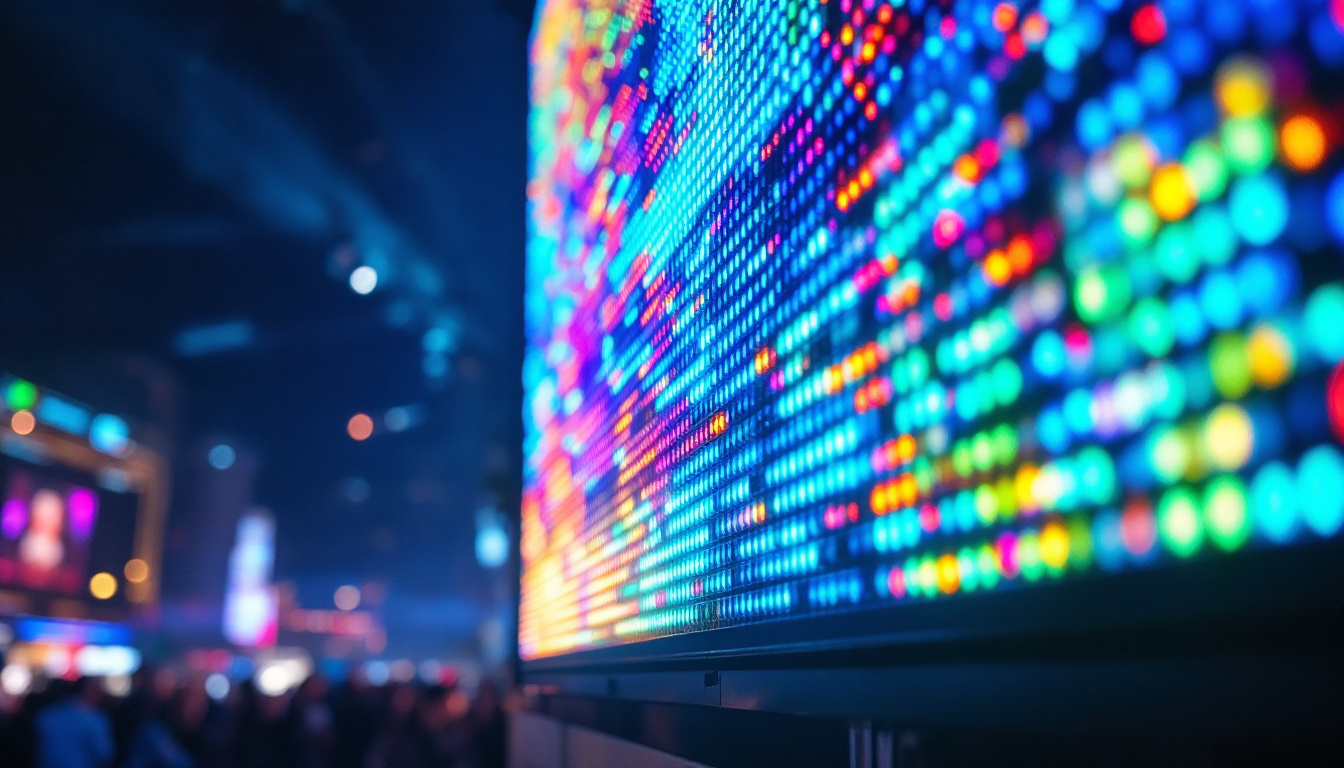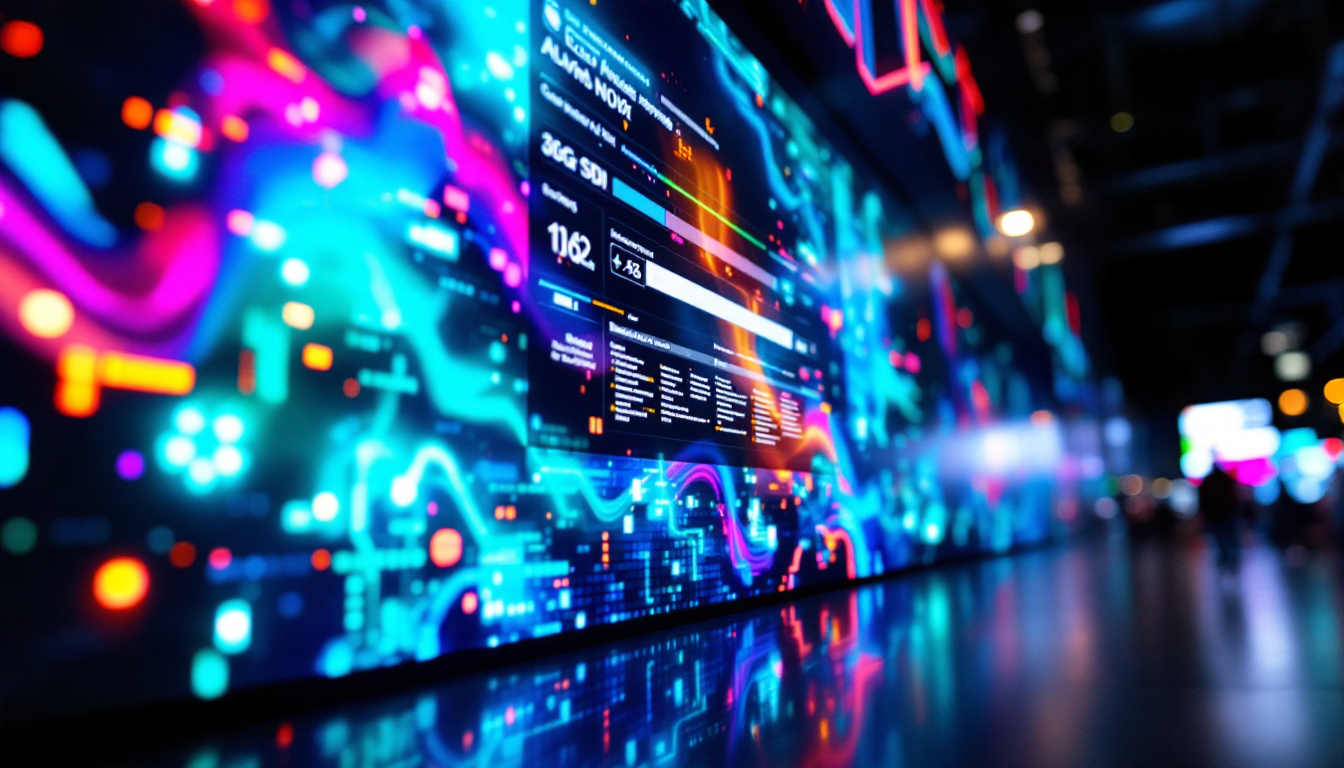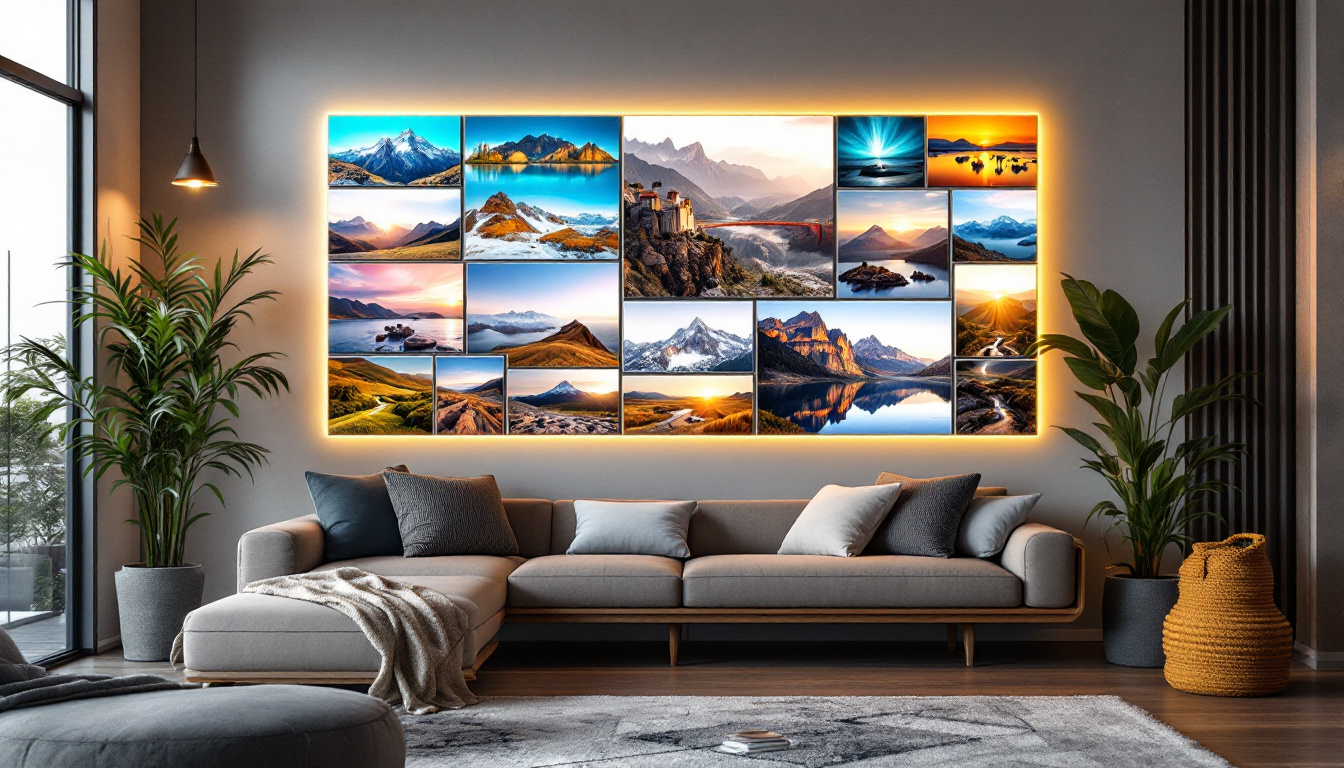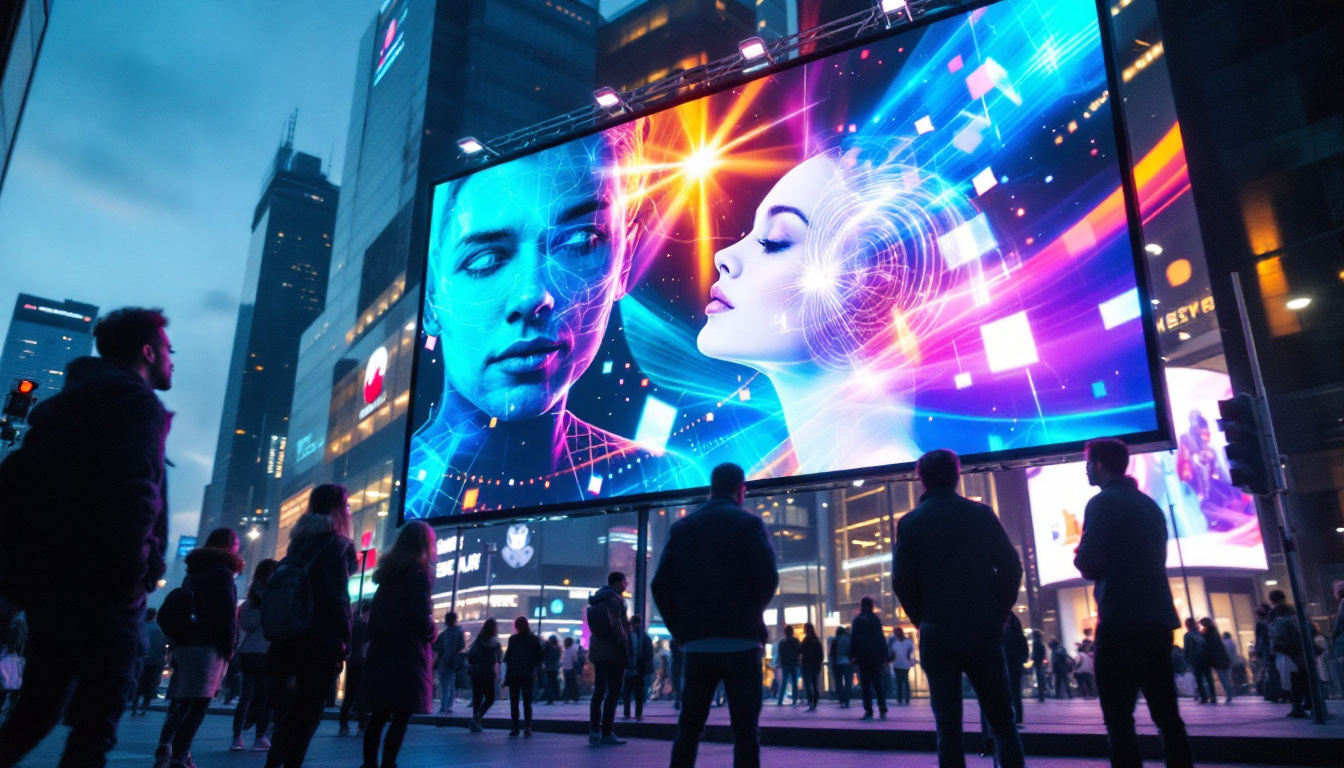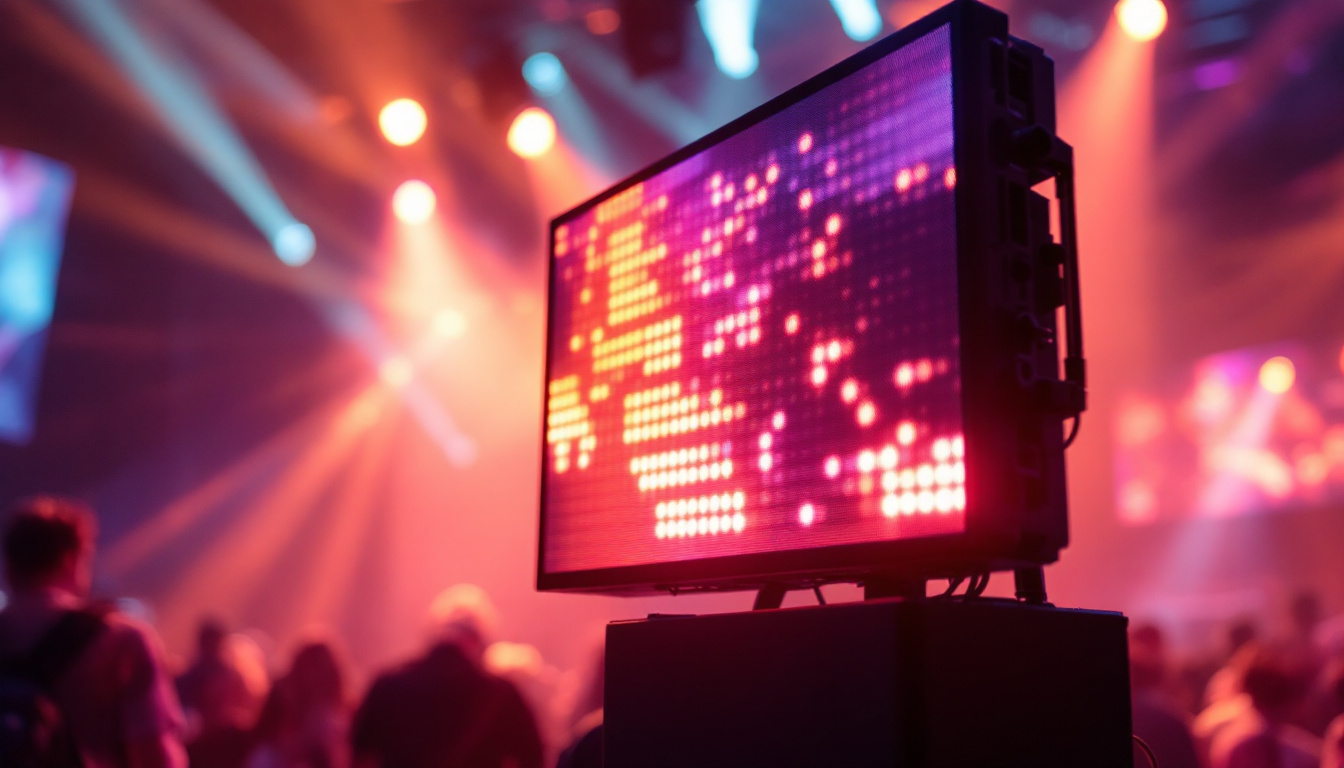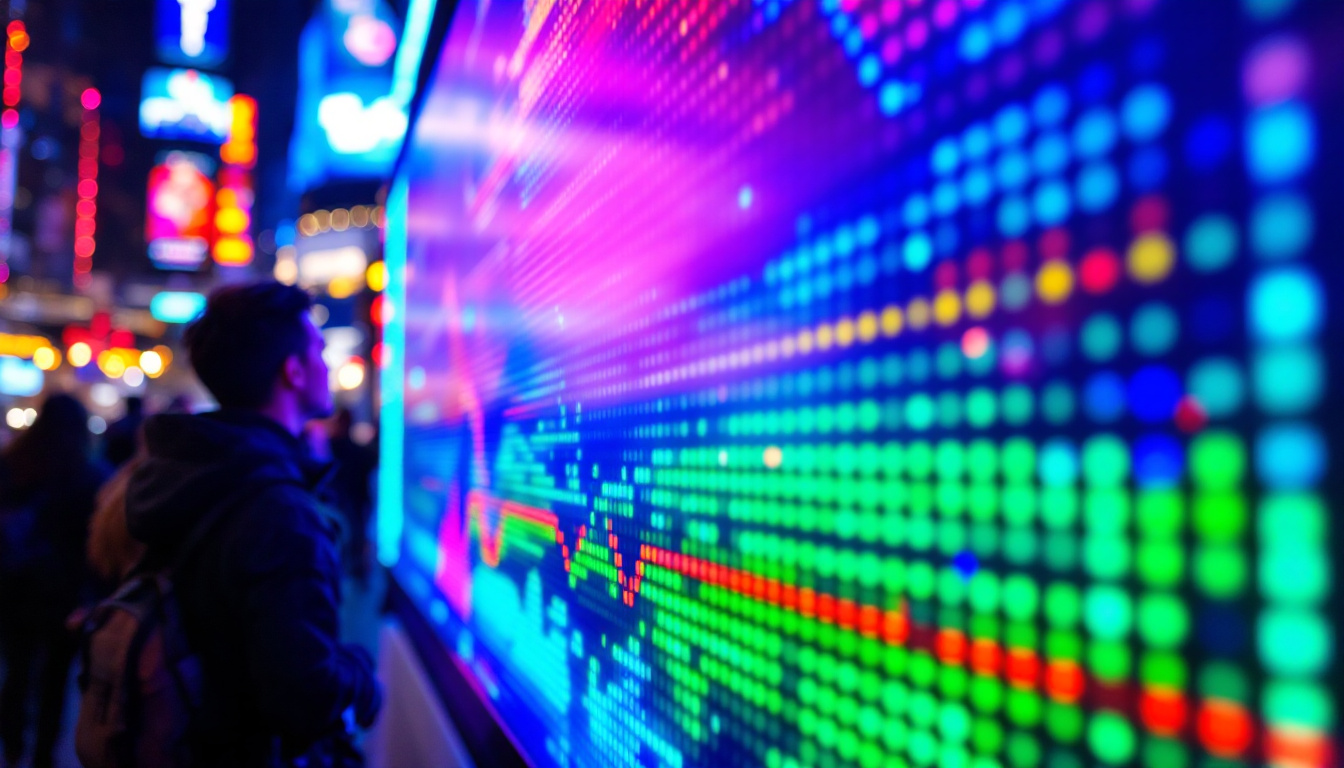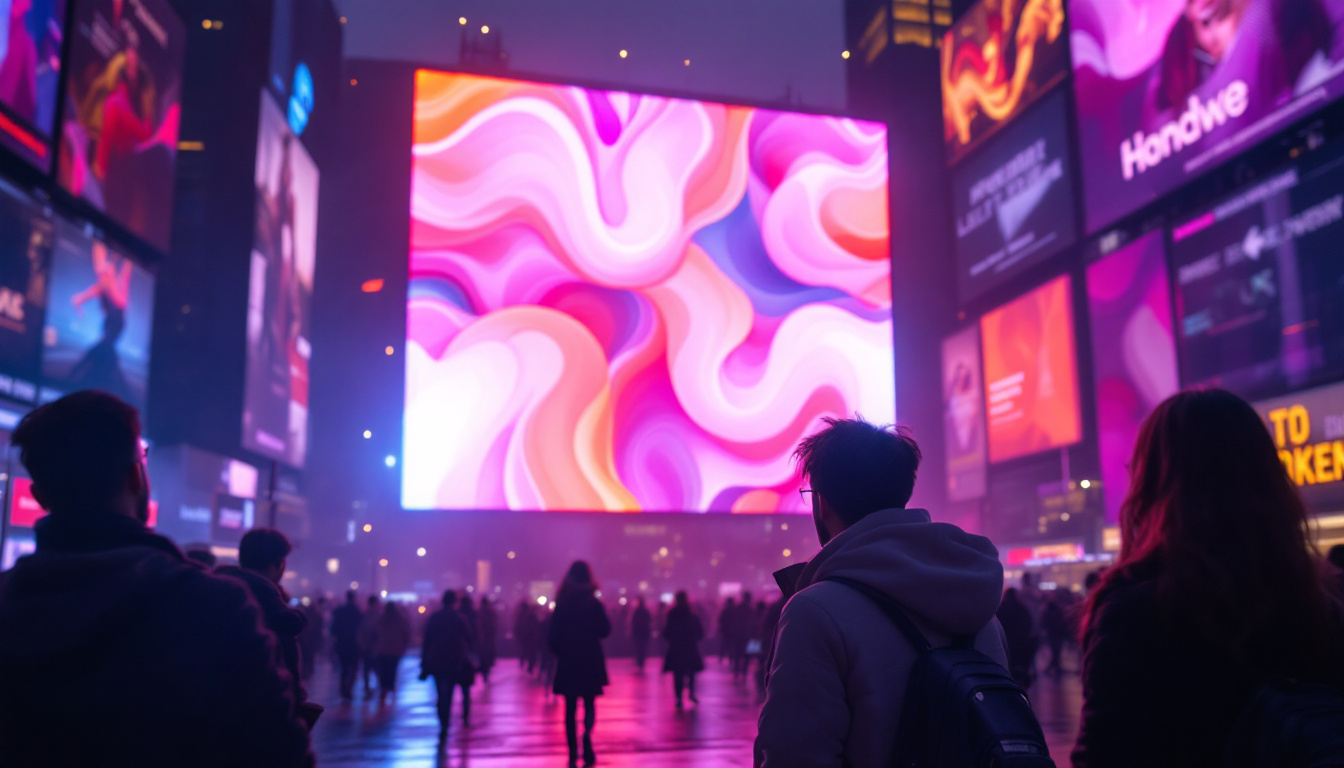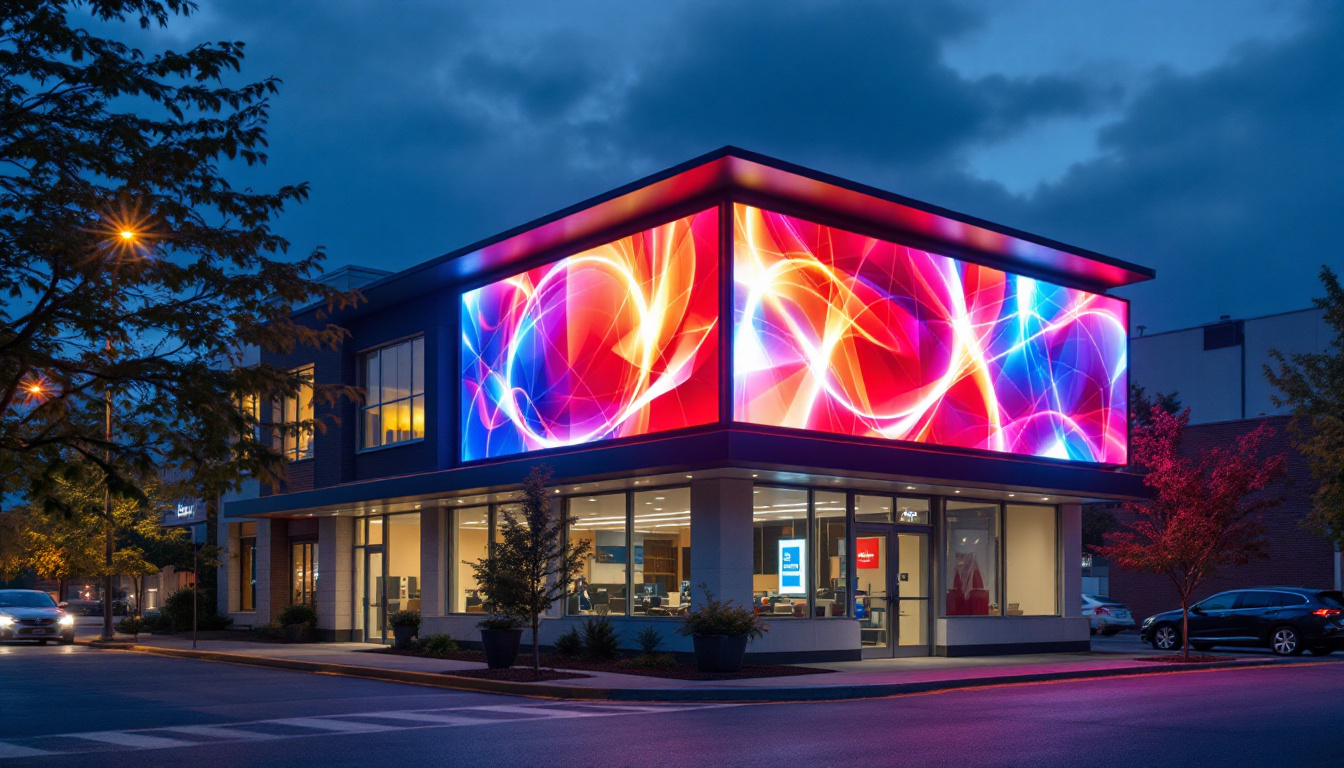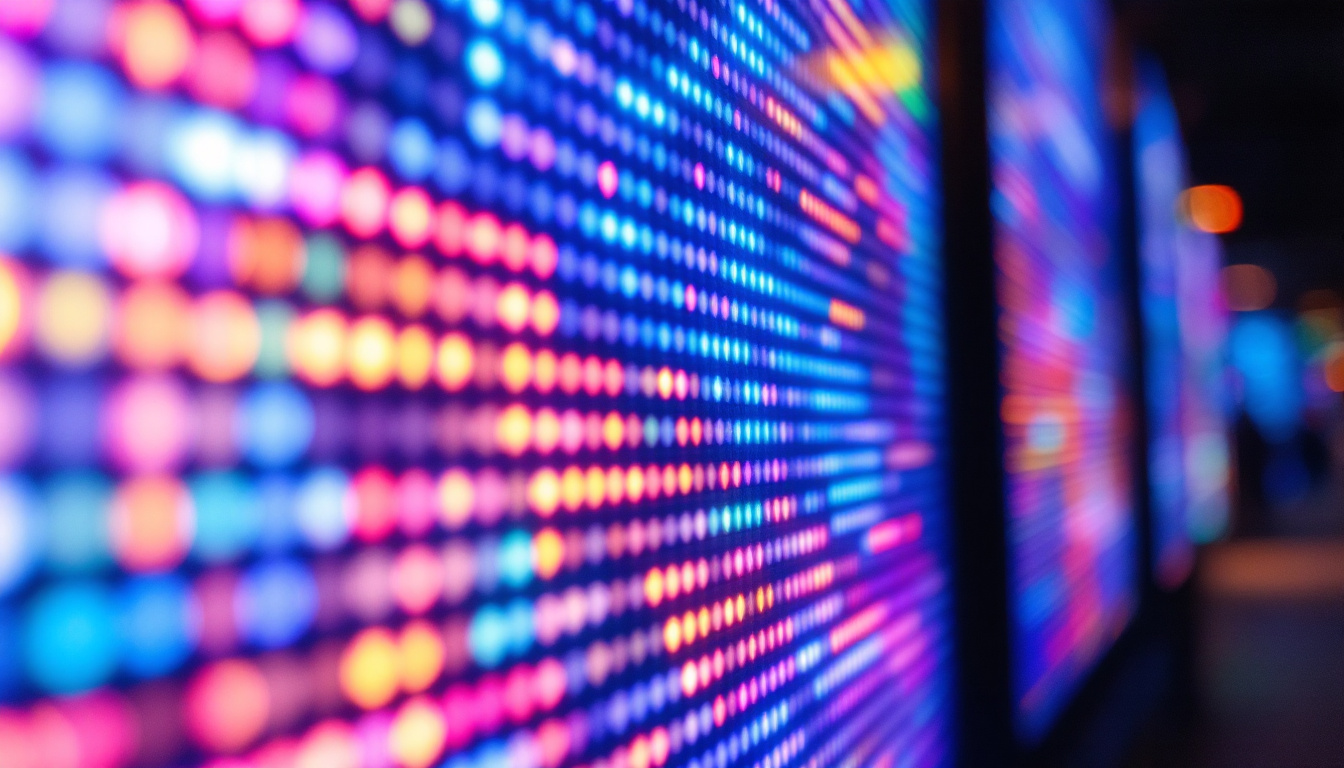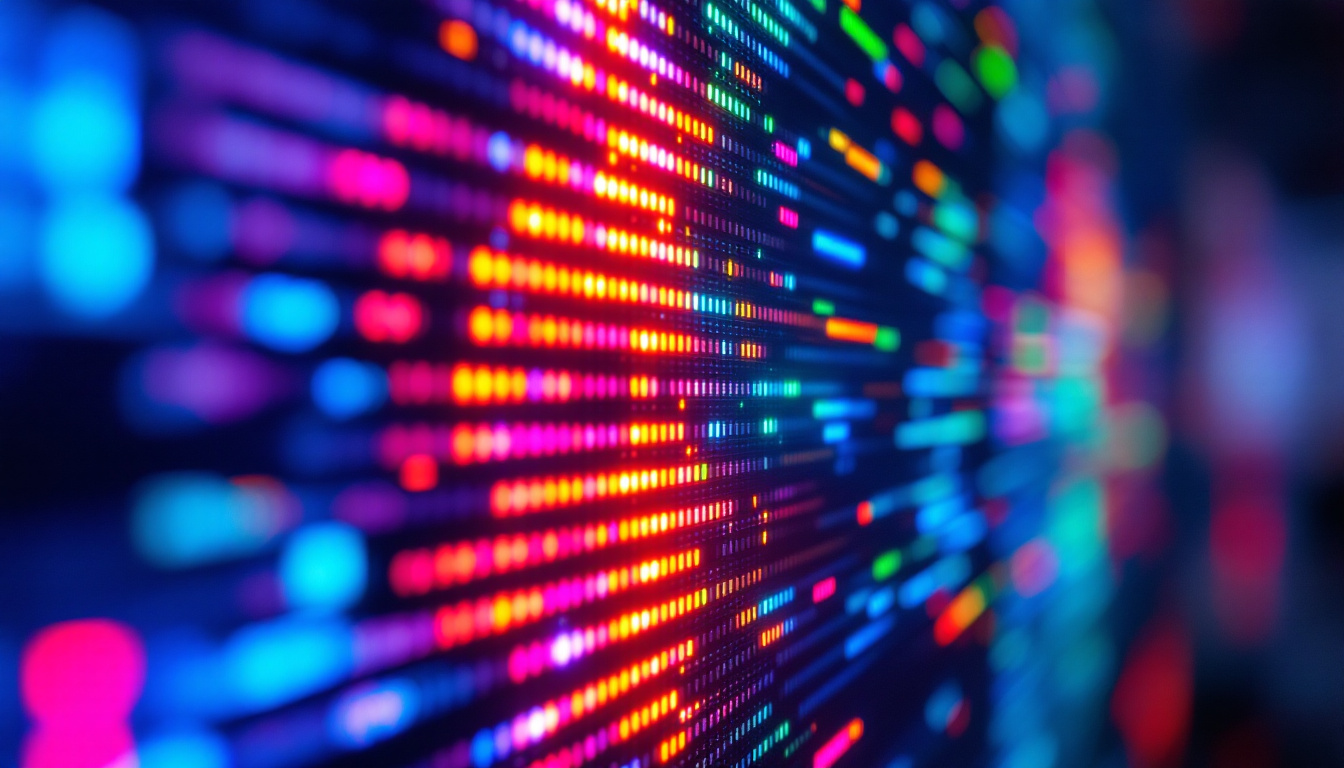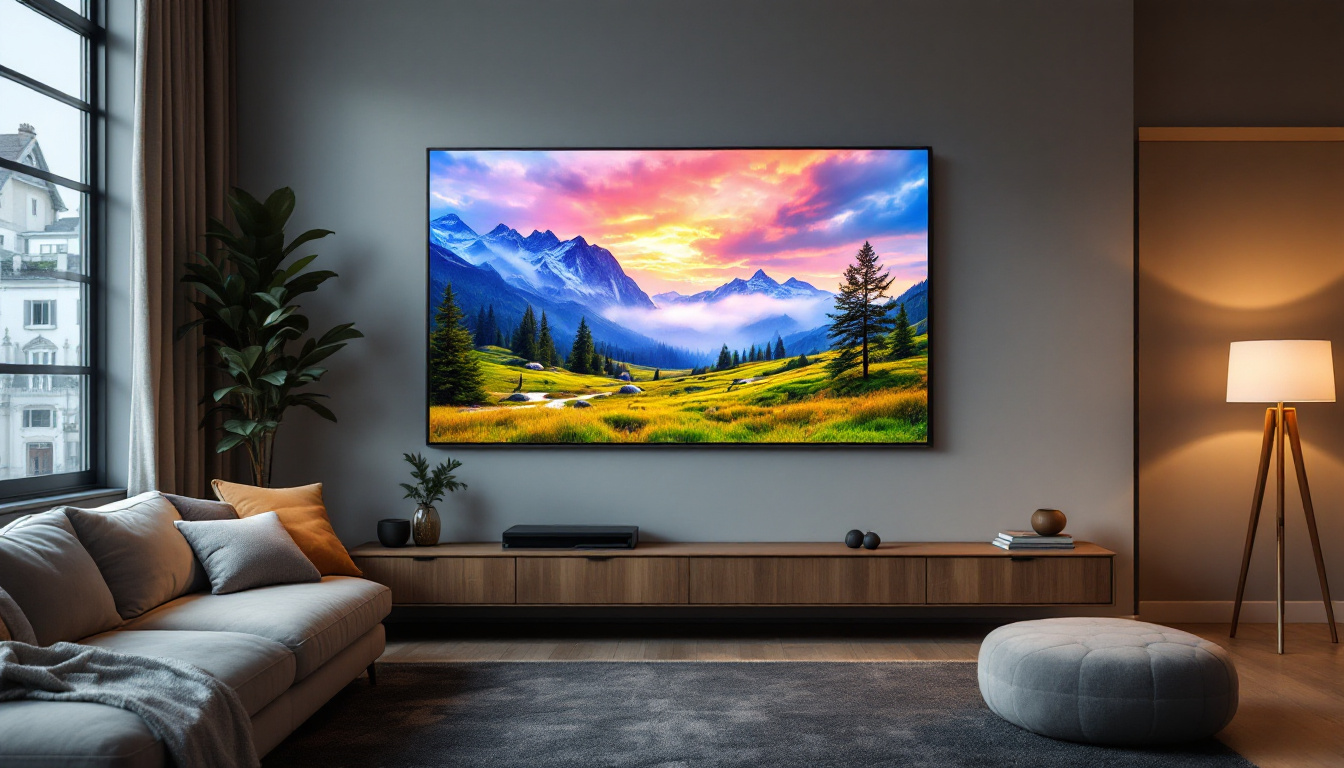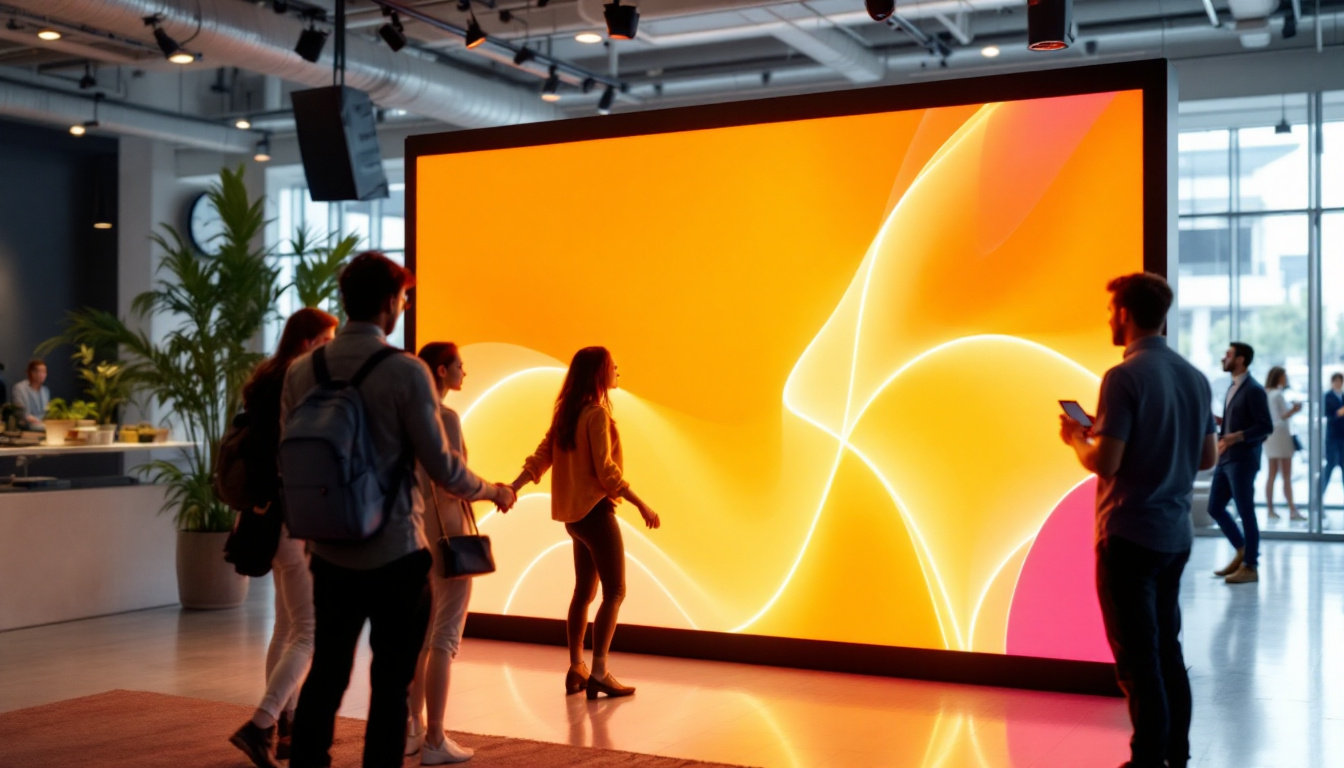In today’s digital age, LED displays have become an integral part of our visual experience, transforming the way information is presented across various platforms. From billboards to conference rooms, LED technology offers vibrant colors, high brightness, and energy efficiency. This article delves into the intricacies of LED displays, their installation processes, and the advantages they bring to both businesses and consumers.
Understanding LED Displays
LED, or Light Emitting Diode, displays utilize semiconductor technology to produce light. Unlike traditional displays that rely on liquid crystals or cathode ray tubes, LED displays are composed of thousands of tiny diodes that emit light when an electric current passes through them. This technology has revolutionized the way visuals are rendered, providing sharper images and a broader color spectrum. The efficiency of LED technology also means lower energy consumption, making it an environmentally friendly choice for both consumers and businesses alike.
Types of LED Displays
LED displays come in various forms, each designed for specific applications. The most common types include:
- Direct View LED: These displays are made up of individual LED modules that are assembled to create a larger screen. They are often used in outdoor advertising and large venues due to their high brightness and visibility. Their robust construction allows them to withstand harsh weather conditions, making them ideal for billboards and stadiums.
- LED Backlit LCD: This type combines traditional LCD technology with LED backlighting. It enhances the brightness and contrast of the display while maintaining the benefits of LCD screens. This hybrid approach allows for thinner designs and improved energy efficiency, which is particularly advantageous for portable devices like laptops and tablets.
- Organic LED (OLED): OLED displays utilize organic compounds that emit light when an electric current is applied. They are known for their deep blacks and vibrant colors, making them popular in high-end televisions and mobile devices. The flexibility of OLED technology also enables the creation of curved and foldable screens, pushing the boundaries of display design.
How LED Displays Work
The operation of an LED display is relatively straightforward. Each pixel in an LED display consists of red, green, and blue diodes. By varying the intensity of these colors, a wide range of hues can be produced. This RGB (Red, Green, Blue) model allows for the creation of millions of colors, resulting in stunning visuals. The ability to control each pixel independently contributes to the high level of detail and clarity that LED displays can achieve.
When an image is displayed, the control system sends signals to the diodes, adjusting their brightness levels to create the desired output. This rapid response time is one of the reasons LED displays are favored for dynamic content, such as videos and live feeds. Furthermore, advancements in technology have led to the development of smart LED displays that can adapt to ambient light conditions, ensuring optimal viewing experiences in various environments. These displays can also incorporate interactive features, allowing users to engage with the content in real-time, which is particularly useful in educational and advertising settings.
The Installation Process
Installing an LED display involves several critical steps, each requiring careful planning and execution. Proper installation is essential to ensure optimal performance and longevity of the display.
Site Assessment
The first step in the installation process is a thorough site assessment. This involves evaluating the location where the display will be installed, considering factors such as:
- Viewing Distance: The distance from which the display will be viewed affects the pixel pitch required for optimal clarity.
- Ambient Light Conditions: Understanding the lighting conditions helps determine the brightness needed for the display to remain visible.
- Mounting Options: Whether the display will be wall-mounted, freestanding, or installed in a custom structure must be assessed to ensure stability and safety.
Additionally, the surrounding environment plays a significant role in the assessment. For instance, nearby structures or trees can cast shadows that may impact visibility during certain times of the day. Analyzing foot traffic patterns can also provide insights into the most effective positioning of the display to maximize audience engagement. This comprehensive evaluation ensures that the display not only meets technical specifications but also aligns with strategic marketing goals.
Preparation and Planning
Once the site assessment is complete, the next phase involves detailed planning. This includes designing the layout of the display, selecting the appropriate hardware, and preparing the necessary infrastructure. Key considerations include:
- Power Supply: Ensuring that the location has adequate power supply and backup systems to support the display’s energy needs.
- Cabling and Connectivity: Planning for data and power cabling to ensure seamless operation and control of the display.
- Environmental Protection: If the display is outdoors, it may require additional weatherproofing to protect against the elements.
Moreover, it is essential to consider the regulatory requirements and obtain any necessary permits for installation, especially in public spaces. Collaborating with local authorities can help streamline this process and avoid potential legal issues. Furthermore, engaging with stakeholders, such as marketing teams or event planners, can provide valuable input on content strategy and display functionality, ensuring that the installation meets all intended objectives.
Installation Steps
The actual installation of the LED display involves several steps:
- Mounting the Structure: The first step is to securely mount the display structure, whether on a wall or a standalone frame.
- Connecting the Components: This involves connecting the LED modules, power supply, and data cables.
- Calibration and Testing: Once installed, the display must be calibrated for color accuracy and brightness. Testing is crucial to ensure everything functions correctly before going live.
During the calibration process, technicians often utilize specialized software to fine-tune the display settings, ensuring that colors are vibrant and consistent across all modules. This step is vital, as even slight discrepancies can detract from the overall visual impact. Following calibration, a thorough testing phase is conducted to simulate real-world usage scenarios, checking for issues such as flickering, dead pixels, or connectivity problems. This meticulous attention to detail guarantees that the display will perform reliably under various conditions, providing a seamless viewing experience for the audience.
Advantages of LED Displays
LED displays offer numerous advantages that make them a preferred choice for many applications. Understanding these benefits can help businesses and individuals make informed decisions.
Energy Efficiency
One of the most significant advantages of LED technology is its energy efficiency. LED displays consume considerably less power compared to traditional display technologies. This not only reduces operational costs but also contributes to a smaller carbon footprint, making them an environmentally friendly option.
High Brightness and Visibility
LED displays are known for their high brightness levels, which make them suitable for both indoor and outdoor use. They can maintain visibility even in direct sunlight, ensuring that content remains clear and engaging. This characteristic is particularly valuable for advertising and public information displays.
Longevity and Durability
LED displays are designed to last. With a lifespan of up to 100,000 hours, they significantly outlast traditional displays. Additionally, they are more resistant to shock and vibration, making them ideal for high-traffic areas and dynamic environments.
Applications of LED Displays
The versatility of LED displays allows them to be used in a wide range of applications across various industries.
Advertising and Marketing
In the advertising sector, LED displays are a game-changer. They can display dynamic content, such as videos and animations, capturing the attention of passersby. From large billboards in urban areas to smaller displays in retail stores, LED technology enhances marketing efforts by delivering eye-catching visuals.
Events and Entertainment
LED displays are widely used in events and entertainment venues. Concerts, sports events, and conferences utilize large LED screens to enhance the audience’s experience. These displays can show live feeds, graphics, and promotional content, creating an immersive environment.
Corporate and Educational Settings
In corporate environments, LED displays serve as effective communication tools. They can be used for presentations, digital signage, and information sharing. Similarly, educational institutions use LED displays to facilitate learning through interactive content and visual aids, enhancing student engagement.
Challenges and Considerations
While LED displays offer numerous benefits, there are also challenges associated with their installation and maintenance. Understanding these challenges can help in making informed decisions.
Cost Implications
The initial investment for LED displays can be significant. Although prices have decreased over the years, high-quality installations still require a considerable budget. Businesses must weigh the long-term benefits against the upfront costs to determine the viability of the investment.
Technical Expertise
Installing and maintaining LED displays requires specialized knowledge and skills. It is essential to work with experienced professionals who understand the intricacies of the technology. Inadequate installation or maintenance can lead to performance issues and increased costs over time.
Content Management
Effective content management is crucial for maximizing the impact of LED displays. Businesses must invest in content creation and management systems to ensure that the displayed information is relevant and engaging. Regular updates and maintenance of content are necessary to keep the audience interested.
The Future of LED Display Technology
The future of LED display technology looks promising, with continuous advancements on the horizon. Innovations such as flexible displays, improved resolution, and integration with augmented reality are set to enhance the capabilities of LED technology.
Emerging Trends
As technology evolves, several trends are emerging in the LED display market:
- MicroLED Technology: This new technology promises even smaller pixel sizes, resulting in higher resolutions and better image quality.
- Interactive Displays: The integration of touch technology allows users to interact with displays, enhancing engagement in retail and educational settings.
- Smart Displays: The incorporation of IoT technology enables displays to connect to the internet, allowing for real-time content updates and analytics.
Conclusion
LED displays have transformed the way information is conveyed in various sectors, offering unparalleled brightness, energy efficiency, and versatility. As technology continues to advance, the potential applications for LED displays will only expand, making them an essential tool for communication and engagement in the digital age. Understanding the intricacies of installation, advantages, and future trends is crucial for businesses and individuals looking to leverage this powerful technology.
In summary, whether for advertising, corporate communication, or educational purposes, LED displays provide a dynamic and effective medium for reaching audiences. As the demand for high-quality visual content grows, investing in LED technology is not just a trend but a strategic move towards enhancing visibility and engagement.
Discover the Future of Visual Engagement with LumenMatrix
Ready to elevate your visual communication and captivate your audience like never before? Explore LumenMatrix’s comprehensive range of LED display solutions, from vibrant Indoor and Outdoor LED Wall Displays to innovative Vehicle and Sports LED Displays. Whether you’re looking to create an immersive Floor LED Display, a Custom LED Display tailored to your unique needs, or seeking the convenience of an All-in-One LED Display, LumenMatrix has the technology to bring your vision to life. Experience the revolution in digital signage and make a lasting impression with our LED Transparent Displays. Check out LumenMatrix LED Display Solutions today and join the forefront of the digital age.

